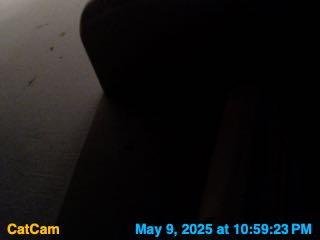A couple people asked me to keep them posted about the books I am reading. So here goes. I finished Pictures & Tears by James Elkins. I’m going to re-read the end because I found myself a little distracted. I thought it was so very interesting that I carried it around with me and read it while waiting, while eating etc. Why do people react with tears to a painting? Why did this used to be much more common. What are some of the things that bring people to tears? Is crying a “correct” response to art? Why don’t art historians react with tears or much else? These are just some of the questions covered. The first part of the book talks a great deal about Rothko’s work and in particular the Houston chapel filled with his black paintings. I would really like to go see those in person to see for myself!
But this book got my brain working overtime this week. I resolved I would go and look at art for myself this weekend to see what happened. The timing was great. There’s an exhibit of three Jackson Pollock drip paintings at the Williams College Museum of Art. Although I’ve seen the famous short film about Pollock actually painting, I can’t remember seeing any of his paintings in person. And I’ll confess that based on printed depictions of his stuff I’ve not been a fan, however I went with an open mind and a willingness to really look. Elkins talks about the difficulties of spending time with paintings — too many people, too much noise etc. All true.
I stood my ground, while trying not to hog the exact center of the room. I took my time. I looked up close and far away, from side to side. I realized with paintings that large it was better to be where you could see the whole thing at once. I looked at how the paint was applied and how the paints reacted to each other. I enjoyed the real gestures of the work – it reminded me of a lot of things in the world. Mainly I thought about what it would be like to paint that way, as though the paint were coming from the end of my arm.
I also was so impressed at how organized it all was. Most people think of Pollock’s work as this messy chaotic thing but I was struck by how unchaotic it seemed.
Did I cry? No. Did I react? Yes, most favorably.
I went on to other parts of the museum where I looked at three separate exhibits. I really only meant to walk through and then go back to the Pollocks, but I got sucked in by a pair of Rembrandt lithographs. And the next thing I knew I was standing in front of an etching, Grand Vent by Joan Miro, and although I didn’t have tears running down my face I was definitely full of rising emotion. Unbelievable. Lasted a few minutes. I couldn’t really put my finger on what it was about that one piece that made me react to strongly.
I was very thrilled to see three pieces by Joseph Alber who I have read re color theory in the past. I went on to another exhibit, American Dreams. Bang! George Innes. I’m a real sucker for Hudson River School. Next small room – religious paintings, icons and sculpture, some very old, some curiously new. Took a stroll back to the room of Pollocks. Circled back to Miro. Went downstairs to another gallery, where my eye said “what the heck is that????” It was a Kooning. Oh. Pleased to meet ya. It so stood out – the power of the artist? Another piece intrigued me – a depiction of the Annunciation. So many things to see. A really big painting. Many spherical things including one improbably placed spherical glass vase of flowers. And what’s that down in the right corner? Sort of fuzzy in the scheme of the painting, but up close there was no mistaking what it was. A basket of rolled bits of fabric. A needle stuck into one roll. And a pair of silver, rather ornate scissors. Amazing. When I stepped away again, it all receded into the shadows once more. How’d he do that? More to come on this whole topic….


